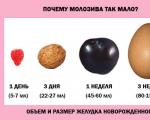Paper toning. We draw tits with colored pencils on tinted paper. Tinting the paper with green, black and red tea.
The traditional way to work with crayons or conte pencils is to draw on tinted paper with white or sanguine. The paper represents a mid-tone so you can manipulate the three colors effectively. This technique is known as "a trios couleurs" (three-color) and is an excellent means of modeling shape; it was often used by ancient masters to depict nudes.
The usual choice for working with white and sanguine conté is beige or cream colored paper, but the method can be applied to working on other colors of paper.
You could, for example, use black or white crayon on gray or blue paper, and it is possible to even use all four colors of conte at the same time.
The advantage of using tinted paper is that you can paint the highlights yourself instead of leaving them white as in a regular solid color painting. In the works of ancient masters, the main highlights were usually emphasized with white last; you can start with white if the objects are represented mainly by highlights or light areas, gradually moving to darker tones as you work, leaving the paper free for mid-tones. It is quite possible to use shading techniques, but you should be careful at the very beginning and try not to cover the paper too tightly, so as not to clog the field of the design, making it unusable for work.
Remember that the use of two or more conte colors is the essence and basis in the monochrome technique; colors are used as tones rather than representing actual colors
How to create a drawing in the style of Da Vinci
1. Working on warm mid-tone paper, the artist uses a satin Conté pencil for an initial sketch and then outlines the first tone with light strokes.
2. To create the shape of the head and indicate the main light tones, white conte color is used. The strokes remain barely noticeable. This result can be achieved by holding the pencil as far from the tip as possible.

3. To emphasize the characteristic features of the face, a well-pointed black Conte pencil was chosen. Since stricter control is required at this stage, the pencil is held closer to the point.

4. When executing this drawing, the artist took Leonardo da Vinci’s studies as a basis. To achieve the soft effect that brought fame to the artist, he blends highlights and mid-tones on the cheeks with a soft cloth wrapped around his finger.

5. The features are emphasized once again, the shadow on the side of the face is enhanced, and a few strokes are added to the hair. Note the soft darkening on the side of the mouth and under the lower lip.
Tinting paper with fill gives a smooth colored surface. It can be used to solve all kinds of artistic problems. For example, when depicting fish, you already have their habitat - water (a sheet of tinted blue paper). It is very interesting to paint winter landscapes with white gouache on dark paper. You can, of course, just buy paper of the desired color. But this is quite expensive (this is especially important for kindergartens and schools). Yes, and sometimes there is no time to urgently go to the store.
The best material for tinting paper with pouring is watercolor - the layer of tone turns out to be thin, transparent, the paint is easily diluted with water, and it is good to paint on a surface filled with watercolor with any other materials. If you need to get a very dense, covering layer, then ink or mascara are best suited.
If the paper is very warped or “twisted,” you can iron it from the wrong side with an iron, but it is better to avoid this. Heavily ironed tinted paper is not suitable for children to draw with felt-tip pens or watercolors. They will “slip” along it. Although gouache, of course, will fit perfectly on such a surface.
You can tint the paper yourself, in advance, and give it to your children ready-made. If you want to involve children in tinting, we recommend doing or. Both of these techniques are perceived by children as playing with paints and the classes are very fun.
Plain fill – tinting paper for drawing with children
Single-color filling - giving the paper a different color, coloring it evenly. You can choose any paint color. For monochromatic tinting of paper, it is convenient to use not a brush, but a piece of cotton wool or foam rubber (cotton wool produces a smoother finish). Let's take a piece of cotton wool (makeup remover discs are suitable - 2-3 pieces at a time), soak it in water, dip it in paint and, making movements from left to right - from right to left, paint the sheet. If the sheet turns out “striped,” simply rinse the cotton slightly and pass it over the entire surface, evening out the tone.

If you need to make very dark, blue, red, black paper, then it is better to use ink or ink. They are applied with a wide brush, carefully covering the entire surface of the sheet. Try not to let the mascara collect in “puddles” - they may crack later.

Toning paper with ink is suitable for drawing a winter landscape with white gouache with children, for mastering the elements of Khokhloma painting.
Multi-colored fill - tinting paper for drawing with children.
You may want to make a multi-colored fill so that the colors flow into one another. To do this, you need to proceed in the same way as with a single-color fill, but after painting 1/3 of the sheet, add another paint to the brush (cotton wool).

Then you can add another one. Keep in mind that the paints will mix and if the colors are unsuccessful, “dirt” may come out. A good result is guaranteed when using the closest colors of the spectrum (red-yellow, in the transition zone there will be orange, yellow-green, etc.). You can make a “gradient” fill of different intensities of the same color. Then instead of paint of a different color, simply add water.

After finishing painting, wash and wring out the swab and go over the drawing again with a clean and damp tool, evening out the tone.
Tinting paper with gouache is suitable not so much for drawing as for appliqué with children. For example, you can.
If you tint the paper with two colors - for example, blue and green or blue and yellow, you will get an excellent basis for drawing landscapes with children. When tinting paper in this way, it is better to wait until the first applied paint dries. It is also compositionally better to place the “horizon line” not exactly in the middle of the sheet, but at approximately 1/3 of the height of the entire picture. Moreover, 2/3 can be occupied by both “sky” and “earth”.

These pre-prepared worksheets are especially useful when working with toddlers. Indeed, in this case, the work will turn out to be “adult” and the children will gradually develop an idea of the horizon line and perspective.

Drawing with a foam brush - tinting paper for drawing with children.
For this technique of tinting paper, we will need some equipment - watercolor paints in tubes and, in fact, the brush itself. First of all, you need to prepare a tool – a foam brush. Here's a simple way to do it. Take a ruler and an office clip. Clamp the paperclip onto the ruler. Now we take a piece of foam sponge and, bending it in half, wrap it around a paper clip. To ensure that the sponge holds firmly, we secure it with a stapler. Our tool is ready!

Apply paints of the desired colors to the palette next to each other. The paints should lie side by side and occupy a space equal to the width of the brush. Dip a wet brush into paint.
Let's draw a brush across the paper - we will be left with a multi-colored line. We repeat the operation until we fill the entire paper with color.

If you don’t have watercolor paints in tubes, you can use gouache, but you can only paint on such paper with gouache, preferably in dark tones. But with gouache paints you can simply paint with such a brush with your children, getting wonderful effects!

Here, for example, is a real rainbow - all the colors of the solar spectrum are on the brush! And it was drawn in just one movement.
Try, experiment - and you will succeed!
Hot summer hello everyone!
Today again our regular column “Experiment” and this time we will be tinting the paper!
How do you prepare pages for notebooks? Many people print out special designs, or it can be just white or colored leaves, stamped at will... But sometimes this is not enough, our imagination requires something more, and here tinting sheets of paper comes to our aid.
There are an incredible variety of tinting methods; in the next issues we will try to tell you all about them)
And first of all, of course, our attention is attracted by the most common dye - coffee!
And today I - Alesya Plakhova (LesikSolnce) will paint leaves with you!
Let's get started.
Coffee is used both instant and ground. I always used the first one, but I decided to find out what the difference is. At the same time, after looking through a sea of material on this issue, I found the two most common methods - immersion in a solution and painting with a brush.
So, I took two containers - instant granulated coffee in one, ground coffee in the second.

A few words about concentration. I haven’t found an exact general answer to this question on the Internet, I think it comes through trial and error, and for each craftswoman this coffee:water ratio is different. The main thing is that the solution is sufficiently concentrated. I took 2 tablespoons per 250 ml of water. Pour boiling water over the coffee, then let the solution cool. I strained the ground mixture through a strainer several times.
And this is what I got.
I immersed the left leaf in instant coffee, and painted the right leaf with a brush. It seems to me that using a brush produces a lighter shade, but this method is more labor-intensive.

And the next photo is with ground coffee.

Beyond simply coloring paper, there are a number of techniques to add flair to your work.
1. The very first thing that comes to mind is to spray it with the same solution in which the paper was painted) So - splashes of coffee.

At the bottom of the leaves I put prints with the bottom of the cup. You need to sprinkle coffee on the dried leaves.
2. Again, without leaving the coffee, you can sprinkle it on the still damp paper.
In the first case, I sprinkled coffee granules; I think that simply instant, fine coffee granules would be better suited for this purpose. The effect is very interesting, the paper looks like it has been burned by fire.

In the second case, I sprinkled ground coffee on the paper. This method was completely disappointing, because... on damp paper everything looked very cool, small grains spread beautifully across the paper. But after drying, all the coffee fell off, leaving no trace.

3. Already dried leaves can be sprinkled with just water - this method is often used when working with distress. On coffee-tinted paper, the method also works very strangely - you get lighter islands surrounded by a dark border:

4. In several sources I came across such an interesting method - instead of water, already dried paper is sprayed with alcohol. Let's look:

To be honest, I didn’t notice much difference between water and alcohol; I liked the water even more.
5. And without departing from liquid dyes) Sometimes watercolor is used to create interesting effects. Here everything depends on the required color scheme. For the experiment, I used aqua sprays - “Mango”, “Sunny Morning” and “Forest Greens”. I sprayed wet blanks to obtain beautiful smooth transitions. As you understand, you can spray it on dry paper - but it will already be bright colored splashes on tinted paper.

6. Next, let's move on to bulk ingredients. Using table salt. For this method, it is better to use coarse salt - then the pattern of dissolved crystals will be more bizarre. Depending on the quantity, a different effect is achieved. I poured my heart out to show the drawings that appear on paper.

Elena Vladimirovna Taratova
I present to your attention Master Class"Toning a sheet of paper" For subsequent drawing.
My children, like all children, love paint, but most of all they are fascinated drawing with unconventional techniques. During drawing they feel like artists.
On white drawings on a sheet of paper, as it seemed to me, not very bright and saturated.
I invited the children to try different ways toning a sheet of paper.
In our free time we tried sheet toning various materials. The children were delighted!
I bring to your attention several ways.
1 way "Monotype"
Apply gouache on a sheet of paper, so that the gouache is saturated and moist, cover the top with a second sheet and stroke the sheet with your palms, take off sheet


Method 2 "Foam sponge"
Paint or strips of paint are applied to a damp but well-wrung out sponge. The sponge is turned over with paint downwards and continuous (straight or wavy line).The entire sheet.


Method 3 "Print crumpled paper"
Thin paper crumple and dip into paint, and then form a lump stick to a thick sheet of paper, wherever you want, you can choose any paint.



Method 4 "Scratching"
Paint over sheet of paper with pastels, you can multi-colored, then take black gouache and cover sheet.


Method 5: “Toothed spatula”
Paint over sheet of paper painted. Draw over the painted area several times in any direction until you get relief lines. Let the paint dry.



Method 6 "Spray"
Take a little paint onto a toothbrush or hard brush, tilt the brush or brush over run a sheet over the pile. The splashes will scatter across leaf.


Now you can start drawing!
Dear colleagues! I will be glad if my master- the class will be useful to you in your work!
Enjoy your viewing!
Publications on the topic:
Master class for parents “Non-traditional drawing techniques.” V. A. Sukhomlinsky said: “The mind of a child is at the tip of his fingers.” Target:.
Master class on visual arts. Slide 1: Topic: “Unconventional drawing techniques.” Slide 2: Relevance of the topic: During.
Goal: to expand the knowledge of teachers through familiarization with non-traditional drawing techniques, as a means of developing preschoolers’ interest in.
I am working on the project “Introduction to non-traditional techniques for drawing countries of the world for children of senior preschool age.” I'll tell you a little.
Children like everything unusual and bright. This is the kind of crocodile with a rough surface that I suggested making for my students in class:
The creator of right-brain, intuitive drawing is Beth Edwards. Mrs. Edwards believes (and I generally agree with her) that skill.
MDOU "CRR - KINDERGARTEN No. 2" Valuyki, Belgorod region
Master Class
"Tinting paper in various ways."
1. Method - tinting with wet watercolors and cellophane.
2. Method - tinting with coffee and salt.
3. Method – tinting with felt-tip pen paints (spray).
4.Method – tinting with soap bubbles.
5. Method - tinting with corrugated paper.
Prepared and conducted by the teacher
Senior group
Compensating orientation
BELICHENKO N.A.
G. Valuiki
2013
Target: mastering and subsequent application of paper toning technology in various ways in the practical activities of preschool teachers.
Progress of the lesson.
I. Introductory part.
The presented technology helps create a developmental environment and provide motivation in solving problems related to the development of fine motor skills in preschoolers. Developmental artistic and creative activity, combined with games and massage exercises, helps to improve fine motor skills, the formation of artistic culture, the development of active speech and communication. Promotes the development of the emotional-volitional sphere.
Both the level of visual creativity and the comprehensive development of the child as a whole depend on the degree of development of hand motor skills.
The level of development of children's fine motor skills is one of the indicators of intellectual readiness for schooling. A child with a high level of development of fine motor skills is able to reason logically. He has a fairly developed memory and attention, and coherent speech.
It is no secret that recently the level of speech development of preschool children leaves much to be desired. That is why, in the “Childhood” program, according to which our kindergarten operates, a separate educational area “communication” is highlighted, the content of which is aimed at achieving the goals of mastering constructive ways and means of interaction with other people, namely:
Development of free communication;
Development of all components of oral speech;
Practical mastery of speech norms.
In addition, for a long time, scientists have been conducting numerous studies in the field of using the healing effects of color for various ailments through drawing.
That is why, in my opinion, it is necessary to use the provided technology when working with preschool children.
II. Presentation of the 1st technology.
Watercolor paints were known in ancient Egypt, ancient China and the countries of the ancient world. For a long time, writing with them was considered only one of the components of a graphic design. Watercolor painting in its modern presentation arose relatively recently: at the end of the 18th – beginning of the 19th centuries. Then it gained independence and became one of the most complex painting techniques.
Depending on the degree of moisture of the paper, watercolor techniques are distinguished such as “working wet” (“English” watercolor) and “working dry” (“Italian” watercolor). We are interested in working in wet conditions.
The essence of this technology is that the paint is applied to a sheet previously moistened with water.
So:
Step 1 – Take a wide brush. Dip it in water and, without squeezing, apply water evenly onto a sheet of paper.
Step 2 – Take the paint and apply it to a wet piece of paper without letting it dry. The work will look more impressive if we use several colors. Apply paint brightly, in stripes, spots, whatever you want. After each color you need to wash your brush. It is important here not to make a puddle on the paper. If this happens, you need to soak it with a napkin. On wet paper, the paint will spread beautifully, forming new shades.
Step 3 – Place cellophane on top of the wet paint and press it together to form folds.
Step 4 – Let the paint dry. While the paint is drying, you can play some kind of game with the guys.
Step 5 – Remove the cellophane once the paint is completely dry.
In this work, you can use packaging material with bubbles instead of cellophane.
III. Practical work.Teachers practice the technology of tinting paper by pouring wet watercolors and using cellophane.
IV. Presentation of 2nd technology.
Toning paper with instant coffee and salt - This is a fun way to turn a white sheet of paper into a surface on which you can draw. You can also use black tea for this purpose. Firstly, the paper acquires a very pleasant smell. Secondly, the brown color from coffee turns out more beautiful. And tea gives a warmer shade to the leaf.
The approximate proportions of the solution are two heaped teaspoons of instant coffee granules and a little (about 50ml) hot water - I like to immediately darken the color. And stir well, since coffee does not dissolve well in such a small amount of water.
You need a large oval synthetic brush - this is the most convenient. But, in principle, any painting bristles from household goods will do, even cheap ones!
So, there is paper, a cup of coffee, and a brush.
Then there are two options.
Toning on a dry sheet of paper
First option , for thick, loose paper - you can safely dip the brush into the cup and paint over the sheet. The direction of the strokes does not matter here, since later, when the paper dries, everything will smooth out and there will be an even tone. For smooth thin paper, this option does not work, since the edges of the brush strokes remain visible.
Toning on a wet sheet of paper
Therefore, when flatness is needed, it is usedoption number two. We first moisten the sheet with clean water (with a brush or sponge), and then paint the wet sheet with a coffee solution. Using salt to create texture
Usage table salt on damp paper- a very common way tocreating texture in drawings. And very simple and effective.
Sprinkle salt onto the paper, which is still damp from coffee or watercolors - a little, sparingly, in separate crystals. It is better not to pour a lot of salt in one place, as it crystallizes when it dries, and it is then difficult to remove it from the paper. But if there is not a lot of salt, then after drying it can be easily brushed off. The result is light small jellyfish with dark edging.
You should use coarse salt, not extra salt.
V. Practical work.Teachers are practicing the technology of tinting paper by pouring a coffee solution using salt crystals.
VI. Introducing the 3rd technology.
Toning with soap bubblesis a popular and fun way to tint paper. So, let's begin!
To prepare the solution you need a container (a plastic cup, an unnecessary cup or jar), shampoo or liquid soap, water and paint. Mix the solution, put a cocktail straw in it and blow. We get a lot of foam, to which we apply a sheet of paper. We get beauty.
You can take a ready-made solution forsoap bubbles. Open it, pour it into a cup, add paint (I again added my favorite colored ink), lower the straw, blow and rejoice.
You can take several cups of different colors of paint and apply a sheet, creating a pattern layer by layer.
Note. Necessarily cover with newspapersall surfaces within a radius of one meter from a cup with soap bubbles, as they burst, creating a huge amount of splashes that will cover everything around
VII. Practical work.Teachers are practicing the technology of tinting paper with soap bubbles.
IV. Summarizing.View creative works. The discussion of the results. (For example, in which works this background can be used. Provide examples of children's works with this background). Suggest using other means for tinting: making the background with cotton wool or a piece of foam rubber dipped in water and paint.



